Florida Currents





















October 2025 • Volume 14, No. 12
CEO Michael Shepard
SENIOR VP OF CONTENT Leon Espinoza
EDITORIAL DIRECTOR Chasity Anderson, CCC
DEPUTY EDITORIAL DIRECTOR
Noble Sprayberry
SENIOR EDITOR Jennifer Paton, CCC
FLORIDA CURRENTS EDITORS Sable Riley, CCC; Valeri Saldanha Rosa
ASSISTANT EDITORS Victoria Hampton, CCC; David Herder, CCC
ASSOCIATE EDITOR
Nina Todea
PUBLICATIONS PRODUCTION
SENIOR MANAGER
Elizabeth Beatty
SENIOR PUBLICATIONS COORDINATOR
Alyssa McDougle
Members acknowledge that $4.89 a year, plus postage, is the cost to publish 12 issues a year of FLORIDA CURRENTS ISSN 23276304 (USPS 8300). Published by Pioneer Utility Resources Inc., 5625 NE Elam Young Parkway, Suite 100, Hillsboro, OR 97124—a not-for-profit Oregon cooperative corporation—the magazine serves the communication needs of consumerowned electric utilities in Florida. Preferred Periodicals postage paid at Hillsboro, OR 97123 and at additional mailing offices.
Postmaster: Send address changes to 5625 NE Elam Young Parkway, Suite 100, Hillsboro, OR 97124-6422.
HOW TO CONTACT FLORIDA CURRENTS
Subscription services:
Nonmember subscriptions $15 U.S. a year; $25 foreign a year. Prepayment required. Allow 4-8 weeks for first issue. Identify local edition desired. Have a problem receiving your magazine? Utility members should contact their utility office. Nonmembers call 503-357-2105 or email mailingdept@pioneer.coop. Back issues:
Back issues and extra copies are $3 each, prepayment required. Supply is limited. Identify edition, month and year. Call first to check availability. Contact Pioneer Utility Resources: P.O. Box 1306, North Plains, OR 97133-1306; 503-357-2105; email: mailingdept@pioneer.coop.
DISPLAY ADVERTISING INQUIRIES
American MainStreet Publications 611 S. Congress Ave. Suite 504 Austin, TX 78704-1714; 800-626-1181 or 512-441-5200; amp.coop.
© 2025 Pioneer Utility Resources. All rights reserved. Reproduction in whole or in part without written permission is prohibited. Direct reprint requests to editor@floridacurrents.com or for more information, visit pioneer.coop.
For additional content, search @FloridaCurrents on your favorite social media sites and floridacurrents.com.
In the Florida Keys, community is more than a word—it’s a way of life. Feed the Keys, a United Way of Collier and the Keys initiative, honors former board member “Mangrove Mike” Forster by carrying on his legacy of generosity and service. This annual effort unites residents, businesses and organizations in stocking local food pantries with nutritious foods, providing vital support for the 45% of Keys residents who struggle with food insecurity.
Mark your calendar for Friday, Oct. 17, from 2-6 p.m. Drop off nonperishable food items at any of these three convenient locations:
• Burton Memorial Church in Tavernier
• Keys Area Interdenominational Resources in Marathon
• Star of the Sea Foundation in Key West
When choosing items to give, think of nourishing, shelf-stable foods that can stretch across several meals:
• Boxed macaroni and cheese
• Canned fruits and vegetables
• Dry or canned beans
• Canned meats like tuna, chicken and Spam
• Canned soups
• Rice
• Cereal and oatmeal
• Pasta noodles and sauce
• Peanut butter
• Individually packaged snacks like granola bars, crackers and cookies
Each donation, big or small, makes a meaningful difference for local families.
Learn more at uwcollierkeys.org/ feedthekeys.


In the Kitchen, Page 16

FLORIDA KEYS
ELECTRIC COOPERATIVE ASSOCIATION, INC.
Member Owned Since 1940
Karl Wagner
District 4, Marathon, President
Michael H. Puto
District 4, Marathon, Vice President
Cale Smith
District 3, Islamorada, Treasurer
Gretchen Holland
District 1, Key Largo, Secretary
James J. Boilini
District 1, Key Largo
David C. Ritz
District 1, Key Largo
Craig Belcher
District 2, Tavernier
Joseph H. Roth III
District 2, Tavernier
George D. Hertel
District 3, Islamorada
CONTACT US:
305-852-2431
Pay by Phone 1-855-940-4077 www.FKEC.com
Mailing Address:
P.O. Box 377, Tavernier, FL 33070
MEMBERS SHOULD KNOW:
FKEC offers meter-based surge protection to help safeguard your home or business from power surges entering through the electric system. Learn more about surge protection at FKEC.com/services/surge-protection/
Unless otherwise noted, “FKEC NEWS” writing, design & photography by: Nikki Dunn Cullen, news@fkec.com.
As Halloween arrives, the Florida Keys glow with porch lights guiding little trick-or-treaters, jack-o’-lanterns flickering on doorsteps, and families gathering for a night of fun. Behind all of those bright moments is something we want you to know you can always count on—safe, reliable electricity from your cooperative.
There’s no magic spell or ghostly charm keeping the lights on. Instead, it’s the dedication of FKEC’s employees— your neighbors and friends—many of whom have proudly served this community for decades. In this issue (page 8), we’re recognizing two such employees whose years of service have helped build the strong foundation that continues to power our success.
Reliability doesn’t happen by chance. Every department plays a role in strengthening our system, working year-round to chase away “energy gremlins” before they cause trouble and standing ready to respond when they do. From the field to the office, our team helps ensure FKEC’s 99% power reliability, along with the personal, hometown service you can count on. This month’s feature on our IT and cybersecurity team (page 6) is a reminder that protecting your power goes far beyond the work of line crews and dispatchers—it takes a coordinated effort across all co-op departments.
Alongside the people who keep your



SCOTT NEWBERRY Chief Executive Officer
lights glowing, I’m also proud of the many “treats” FKEC offers to make life easier. Our online tool, SmartHub, puts account management and tracking usage in your hands anytime, anywhere. Meter-mounted surge protection provides peace of mind. And, energy rebates and solar loans help you save money and go green. These services—and more—are part of our commitment to take the fright out of energy use and give members practical, reliable solutions.
As we celebrate Halloween and look ahead to the holiday season, I’m reminded that the greatest “treat” of all is the spirit of community we share. On behalf of the entire FKEC family, thank you for trusting us to power the moments—spooky, sweet, and everything in between—that make the Keys shine bright. I wish you a safe, fun, and happy Halloween. n
October is a season of spooky fun—but when it comes to your electric bill, there should be no surprises hiding in the dark. That’s why Florida Keys Electric Cooperative encourages all members to take advantage of SmartHub, our free online and mobile account management tool.
This month, while kids enjoy trick-or-treating, we invite you to enjoy a real treat—greater control, convenience, and
X UNMASK HIDDEN ENERGY USE – Track your electricity use daily, weekly, monthly, or even hourly to spot unusual patterns—like “energy vampires” quietly draining power when devices stay plugged in.
X SCARE AWAY CLUTTER – Go paperless to reduce clutter and receive instant notification electronically when your bill is ready.
X CAST A SPELL OF CONVENIENCE – Pay your bill online anytime, anywhere or set up Autopay, both of which save time and avoid mail delays and late fees.
X STOP SPOOKY SCAMMERS – Check your account balance 24/7 to prevent being tricked by scammers threatening to disconnect power if payment isn’t received.
X DISCOVER MORE TREATS – SmartHub also connects you to FKEC’s Live Outage Map, co-op news releases, Florida Currents magazine, and easy ways to contact us to report issues or submit inquiries.

confidence with SmartHub. By using this powerful tool, you can shine a light on your energy use and access your account anytime from anywhere.
At FKEC, our mission is to provide safe, reliable, and affordable electricity to our members. With SmartHub, we’re proud to put more power—literally and figuratively—in your hands. n
To Register: Visit www.FKEC.com and go to login or scan the QR code. When you register or log in from your mobile device, you will be prompted to download the app, or you can continue from your browser.
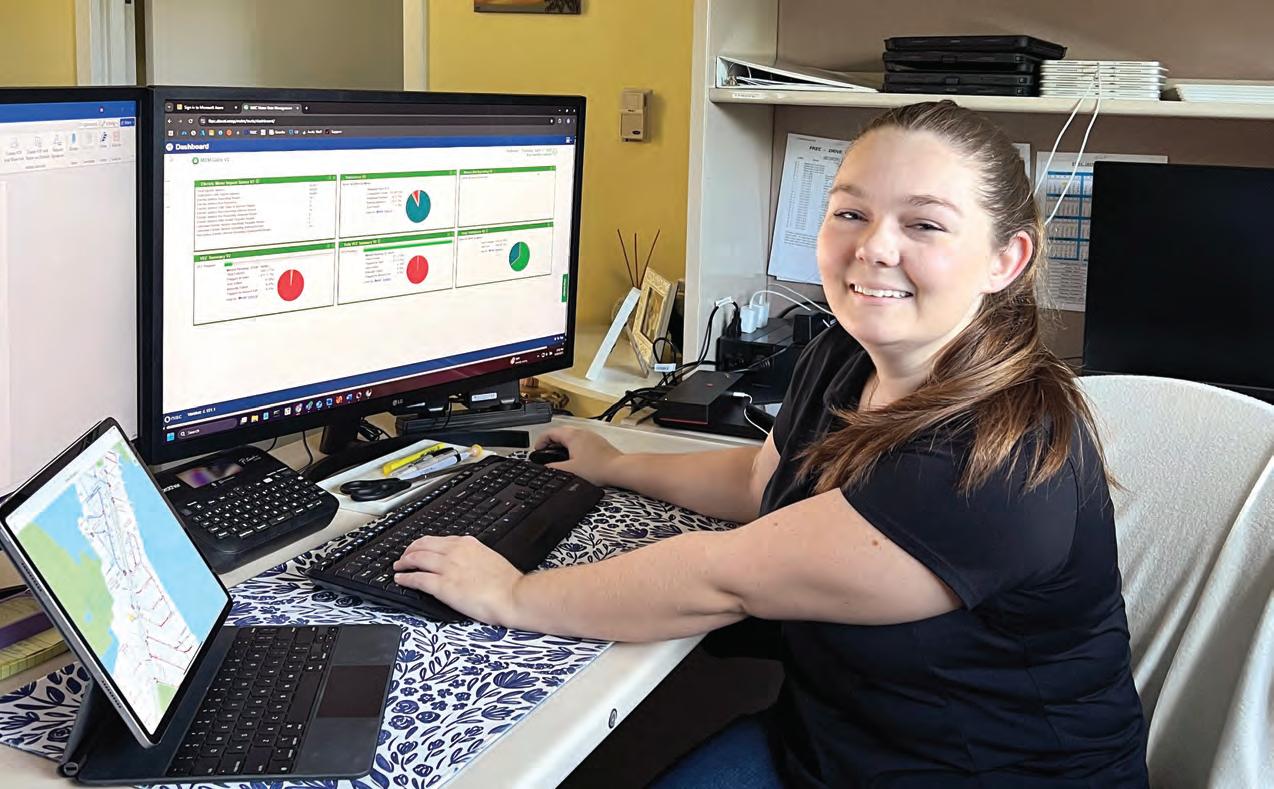


At Florida Keys Electric Cooperative, reliability and safety don’t stop at power poles and substations—they extend to the digital world as well. In today’s connected environment, cybersecurity is essential to protecting both the co-op and its members.
With October being National Cybersecurity Awareness Month, now is the perfect time to recognize FKEC’s year-round efforts to protect member data, safeguard systems, and strengthen the reliability of our power grid. It is also an opportunity to highlight our support of the Cybersecurity and Infrastructure Security Agency’s (CISA) “Secure Our World” campaign. This national initiative is an ongoing call to action for cyber awareness, empowering individuals, families, and organizations to take simple steps that make a big difference online.
best practices to stay ahead of threats. In fact, FKEC has completed all 20 of the National Rural Electric Cooperative Association’s (NRECA) Co-op Cyber Goals, exceeding the national standards many energy and defense companies are required to follow.

This means members can feel confident that their personal data, billing information, and the systems that power their homes are protected every day.


While FKEC works tirelessly to safeguard systems and data, cybersecurity is a shared responsibility. Members can strengthen their own digital safety—and by extension, the community—by practicing the smart habits promoted by the “Secure Our World” campaign:
• Use Strong Passwords – Create long, unique passwords for every account. A password manager can simplify and secure this process.
• Turn On Multifactor Authentication (MFA) – Enable MFA on all accounts that support it—especially SmartHub, email, banking, and social media.

FKEC takes a proactive approach to cybersecurity. Our IT Department implements a comprehensive, multi-layered program that relies on advanced tools, continuous monitoring, and industry’s

To reinforce readiness, FKEC’s IT Department also places a strong focus on employee training and involvement. Engaging initiatives include weekly Cybersecurity Spotlight emails that keep staff informed, and monthly “Phishing Tournaments” that encourage employees to report suspicious emails, texts or calls—turning awareness into friendly competition.
“Through robust defenses and employee education, we work to maintain a strong digital environment,” said Chief Information Officer Tamie Fox. “We also encourage our members to stay alert and to join us in spreading cyber awareness to secure our world.”
• Recognize & Report Phishing – Be cautious of unsolicited messages, urgent requests, and suspicious links. You can report anything that looks unusual to www.cisa.gov.
• Update Software Regularly – Always install the latest updates for your devices and applications to patch security vulnerabilities. By practicing these habits together, we can keep the Keys safe, reliable, and cyber strong. n


Ten years ago, FKEC’s Information Technology Department looked very different. With simpler technology and fewer threats, the digital demands on a local utility were far lighter. However, as the world has become increasingly connected, IT at FKEC has grown significantly to meet new challenges.
Today, nearly every system and department relies on technology—whether it’s secure communications across the grid, mobile tablets for field crews, or drones inspecting lines and poles. To keep pace, the IT team has expanded in both size and expertise. Just two years ago, the department had four members; now, a six-person team has transformed IT from a behind-the-scenes support function into one of the cooperative’s most vital departments.
This year, FKEC created the position of Chief Information Officer, appointing Tamie Fox to lead the co-op’s technology advancements. In addition, the role of Financial Planning, Rate, and Data Analyst now falls under the IT umbrella, further strengthening the team’s ability to guide FKEC’s increasingly digital future.
To maintain communications and grid stability, IT builds redundancy into
FKEC’s systems. Fiber optics, cable, copper, and even satellite connections provide backup layers so that if one service is disrupted, others seamlessly keep operations online.
Field crews rely on IT-provided tablets to complete reports in real time and instantly share data with in-house staff. This technology streamlines workflows for linemen, meter technicians, and tree crews, saving valuable time and improving overall service.
Beyond protecting digital systems, IT manages secure badge access at co-op facilities, supports remote work capabilities, and oversees FKEC’s drone program. Drones enhance system inspections, improve safety, and reduce risks for employees—all while adding another layer of efficiency to operations.
“Technology touches every aspect of our modern utility operations; thus, so does our IT Department,” said CEO Scott Newberry. “Whether they’re troubleshooting, innovating, or safeguarding systems, I thank IT for the work they do to support our 99% reliability and our commitment to co-op members.”

Each figure represents a critical piece of infrastructure that the IT team maintains with expertise and care—ensuring that FKEC operates smoothly and securely.





41 Servers

150+ Network Appliances
10 Data Circuits
5 Networks



Tamie Fox Chief Information Officer
• 30+ years of IT experience
David DiMaggio IT Manager
• 20+ years of IT experience
Amber Navarrete Financial Planning, Rate, & Data Analyst
• 20+ years in accounting and analytics
Ryan Lachowicz Systems Administrator
• 15+ years of IT experience

165 Workstations
100 Tablets
36 Printers
6 Drones
2 Phone Systems
145 IP Phones

250+ network appliances


Andy Giffin Computer Technician
• 10+ years of IT experience


Brooke Barrow IT Technician
• 1 year of IT experience



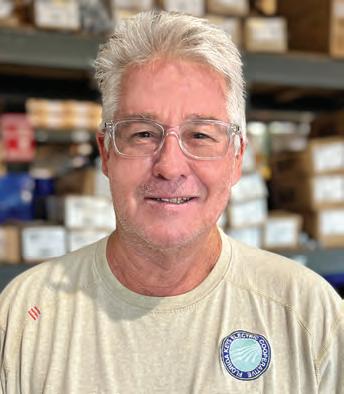

FKEC proudly celebrates and thanks Andy Baxter for his 40 years of dedicated service to our co-op and members.
Andy’s journey began as a Groundman, where he quickly advanced into the four-year Apprentice Lineman
Program, earning the title of Journeyman Lineman. Through his hard work and determination, he continued to excel, becoming a Crew Leader for the Tavernier Service Department in 1996.
“Forty years with FKEC is an incredible achievement,” said CEO Scott Newberry. “We not only appreciate Andy’s knowledge and experience, but also his connection to our members. His dedication and dependability have made him a valued part of our co-op family.”
A proud Conch, Andy shares his love for the Keys with his wife Lisa—who also works at FKEC. When not on the job, they enjoy boating, golfing, and spending time with their children and growing families.
FKEC is grateful for Andy’s decades of commitment and service. His career is an example of loyalty, leadership, and teamwork, and we are honored to celebrate this 40-year milestone. n

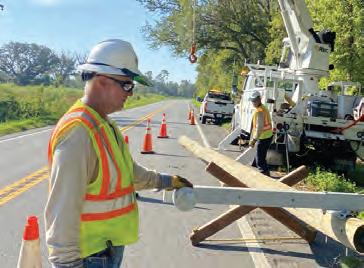
2024 • Andy captaining the FKEC boat.
2023 • Assisting with hurricane power restoration in N. Florida.
Circa 2010 • Greeting members at an FKEC annual meeting.
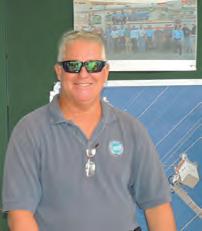


After 39 years of dedicated service, Dan Raber retired from FKEC in August. Since joining the co-op in 1986, Dan was a steady and reliable presence, and his commitment, hard work, and integrity have left a lasting impact.
Dan’s career began in the Warehouse Department before he quickly found his home in the Meter Department, where he has served as a Meterman/Serviceman for nearly four decades. Over that time, he became a trusted face across our service territory, known for his professionalism and friendly connection with members.
“Dan’s contributions reflect the very heart of what it means to serve in a member-owned cooperative,” said COO Joe Joyce. “We thank him for being dedicated, trustworthy and for caring for this utility and our community.”
Outside of work, Dan enjoys spending time with his wife Teresa and their sons, and grandchildren.
As Dan embarks on this next chapter, FKEC extends heartfelt gratitude for his service and wishes him health and happiness in retirement, and time to enjoy the activities he loves. n

2025 • Dan and COO Joe Joyce at his retirement party.
2023 • Heading out into the field.
Circa 2000 • With co-worker Tommy Sawyer at a meter training.



With Fields & Forests, you can have a successful farm and get paid to grow healthy forests. By enrolling, you can diversify your land by planting pine on your unused or marginal land, while still growing crops or raising livestock on adjacent acres. We provide the trees and planting for free, as well as access to a professional forester.
No upfront costs, no change in ownership, no impact on your land rights, no sharing your timber revenue, just expert support and guaranteed payments for 30 years.
Now enrolling landowners with 30+ acres of open fields in Florida, as well as Alabama, Georgia, and South Carolina.




By Drew Woolley




Hunter Kinney has a knack for working with animals. Growing up in Southern Kentucky, he spent seven years at a local wildlife rehabilitation center working with birds and small animals. However, his dream was to work with dolphins, and there weren’t many around in his home state. In 2015, he packed his bags for Key Largo in hopes of helping Dolphins Plus rehabilitate and spread awareness about his favorite animal.

“Everybody loves dolphins and whales,” Hunter says. “They’re just so charismatic and captivating. But a lot of people, I think, don’t know all that much about them.”
By 2018, Hunter was a trainer for Dolphins Plus. But the organization’s Marine Mammal Conservancy, a rescue and rehabilitation facility funded entirely by donations, was in bad shape. That year, the MMC filed for bankruptcy, leaving the closest marine hospital five hours away in Orlando.
“We’re lucky as humans that if we get sick in the Florida Keys, we don’t have to drive all the way to the mainland,”








Hunter says. “Whales and dolphins don’t have that. They have to be transported four or five hours upstate, longer if they’re stranded in Key West. For an animal that’s supposed to be in the water and is already sick or injured, that transport can be very stressful and hurt their chances of rehabilitation.”


That is why, in 2023, a group comprised of many of the same team members who ran the MMC acquired a new property in Islamorada. Now working under the name Dolphin Life Hospital, their hope is a new business model and an increased focus on the public will help them bring top-notch marine rehabilitation back to Southern
Hunter don’t transported longer For the that hurt comprised members a working Hospital, their model public marine Florida.



The model for Dolphin Life is simple—rather than relying entirely on donations to pay for animals’ rehabilitation, it leverages the public’s interest



is known for being intelligent and easily picking up new behaviors and games from her trainers.





















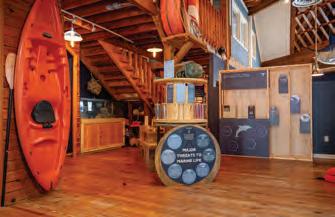
organization is already responsible for, including two adopted because they could not survive in the wild and four that were born at Dolphins Plus.
“Because we have those animals in our care, we have this platform to bring visitors to the Florida Keys and introduce them to the animals, educate them about what we’re doing and let them know what they can do to help us protect thousands of dolphins in the wild,” Hunter says.







facilities and keeping them ready to go because we never know when a stranding is going to occur.”
Finding a place suitable for all of that equipment presented its own challenges.
The property must support an ICU with a 56,000-gallon saltwater tank and a life-support system to maintain optimum water standards for rehab, not to mention veterinary spaces and room to prepare the animals’ meals.

LEFT: Touch tanks give visitors the
In addition, the hospital will have an attached museum called the Exploratorium, complete with an aquarium, interactive exhibits and a gift shop. The hope is that the revenue from the dolphin programs and museum will supplement other contributions to keep the hospital funded. Every one of those revenue streams is needed because caring for marine animals does not come cheap.
“By the time you get all of the medications, diagnostics, veterinarians, supplies like the fish they need to eat, it can cost as much as $10,000 a day,” Hunter says. “That is an awesome expense. Not to mention maintaining the
their mission, one that reaches the Keys and all of Florida’s southern coastline.

After nearly two years of work, Dolphins Plus put the finishing touches on the facility this summer.
“As you can imagine, there were plenty of hidden challenges,” Hunter says. “Most people don’t design whale and dolphin hospitals every day. No one in the Florida Keys had really seen specs like this. We were basically walking on the moon with what we had to get done.”
Even with those challenges and the heavy financial burden, Hunter and the Dolphin Life team believe the new facility will give them the necessary support to continue
“We’re the only group that is authorized by the National Marine Fisheries Service to respond to whales and dolphins here,” he says. “Our area of coverage stretches from south of Miami and Key Biscayne all the way out to the Dry Tortugas and the Everglades. It’s a big 10,000-square-mile area that we cover, and all of that work is funded by our organization here in Key Largo.”
In addition to that core mission, Hunter hopes the dolphin programs and the Exploratorium will spark the same passion for marine wildlife in others that he had growing up. The museum already has exhibits on local ecosystems, coral preservation and the Everglades in place, all geared toward interaction and storytelling.

“We want people to take away more of an emotional response with a bit of playfulness, inspiration and imagination,” he says. “To take away a feeling when they leave us that they’re happy and inspired to be part of a bigger solution.”








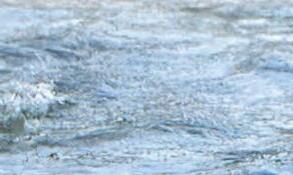




Taking its name from the majestic 72-milelong river that winds through Southwestern Florida, Myakka River State Park covers 58 square miles, placing it among the largest of Florida’s 175 state parks at more than






















Development began in the 1930s, and Myakka River State Park was one of the original parks established by the Civilian Conservation Corps. It opened to the public in 1941, and its 14 miles of flowing river is a vital aquatic artery supporting its diverse range of flora and fauna, including a robust alligator population.






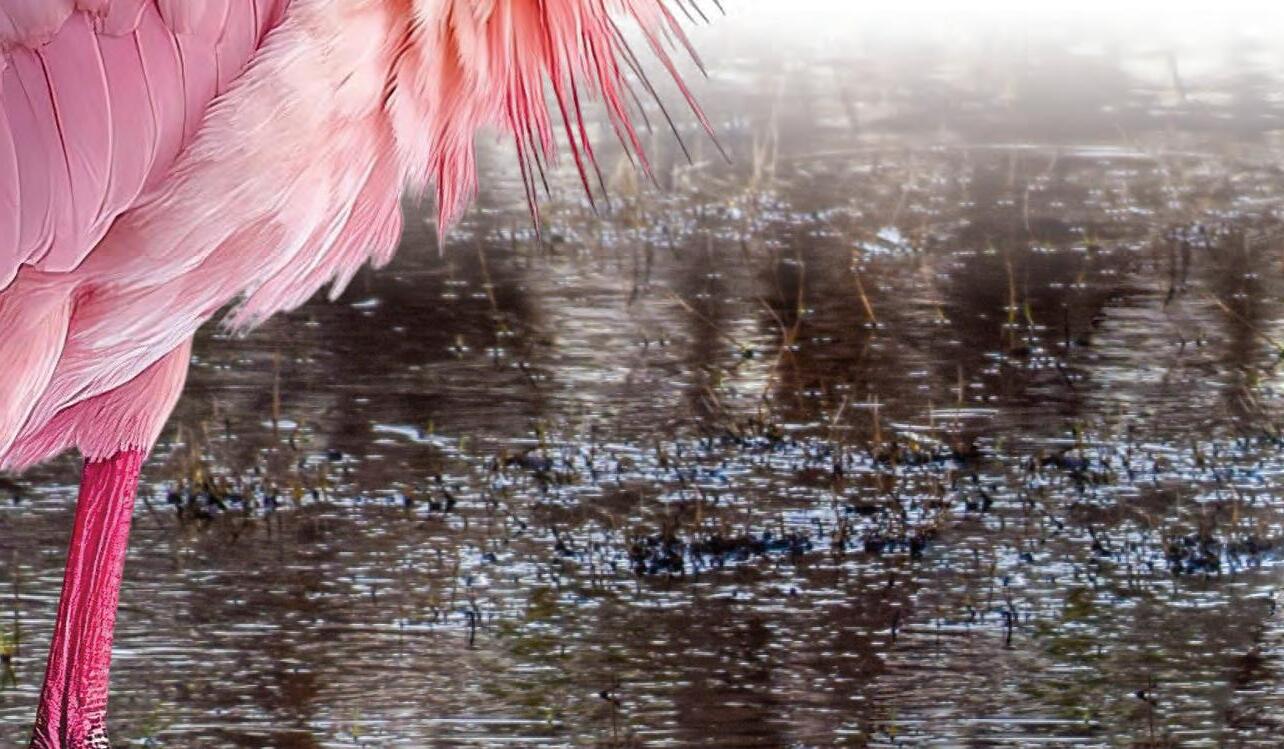


“During the wet season, alligators are distributed widely throughout the park,” Park Manager Stephen Giguere says. “During the dry season, they tend to congregate more, as shallow waters become dry and deep water is less common.”
One of the safest locations to observe the primitive reptiles is from the bridge spanning the river just beyond the visitor center.
“With a good perspective sitting above the waterway, this is probably the best place in the park to easily see wildlife,” Stephen says. “During the winter and spring, you are almost guaranteed to see alligators and wading birds.”
For the more adventurous alligator admirers, a trek to Deep Hole might be in order.



Adjacent to Lower Myakka Lake in the park’s southern wilderness area, dedicated nature enthusiasts must hike through the park’s dry forest region to reach the spot where alligators congregate in and around the 130-foot sinkhole. Their numbers vary with season and water levels, but the gators always far outnumber human visitors, which the park limits to only 30 a day to minimize habitat damage.
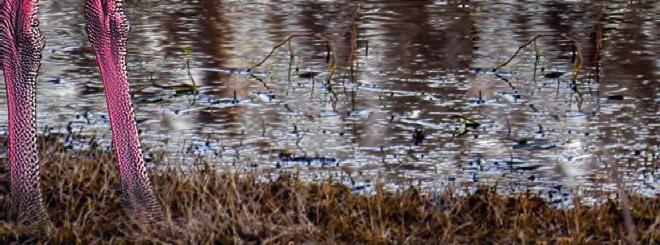


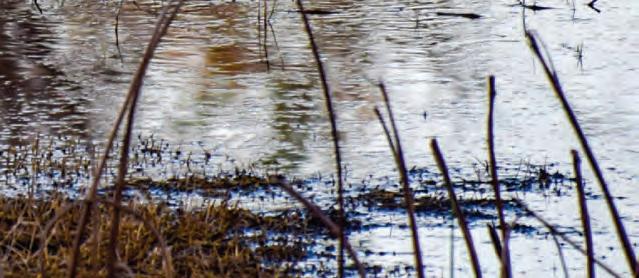
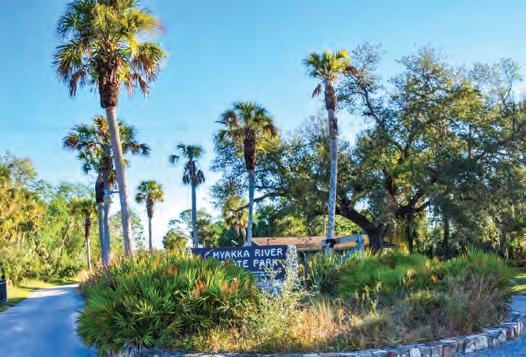
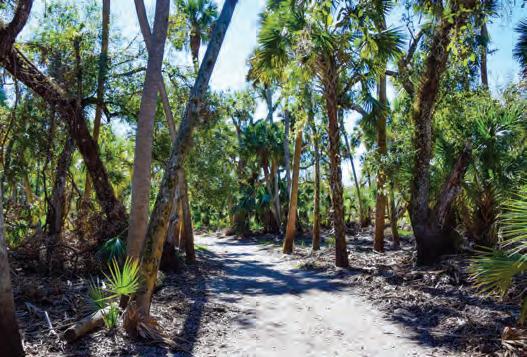

Like most Florida state parks, Myakka River offers visitors camping, hiking, fishing and boating activities.
Bird-watchers also flock to the park to catch a glimpse of wading birds, raptors, songbirds, migratory birds and ducks. With their unusual extended flat bills and distinctive pink feathers, roseate spoonbills are regularly seen at the park feeding in shallow water by thrashing their beaks from side to side scooping up food.
“The river, lakes and marshes are all good places to see them, but it primarily depends on the water level,” Stephen says.
As with most wildlife areas, early mornings and late afternoons are the best times to glimpse Myakka’s animal residents, including more than 100 species
of birds, as well as deer, turkey otters and, occasionally, manatees.
Pennsylvania native Shawn Carey moved to the Boston area in the mid1980s and started visiting Florida in 1990. His adventures in the Sunshine State include 25 trips to Myakka River State Park, and his fondness for the region inspired him to buy a second home just south of Sarasota.
“As a wildlife photographer, the abundance of wildlife, particularly birds, makes it a fantastic place to spend time,” Shawn says.
He teaches bird and wildlife photography for the Massachusetts Audubon Society and co-founded Migration Productions, a company that produces media about birds and natural history.
from top left: In Southwestern Florida, Myakka River State Park offers everything from alligators to a raised walkway.
The short William S. Boylston Nature Trail leads to the Canopy Walkway.
The Canopy Walkway, which is suspended 25 feet above the ground, was the first public treetop trail built in North America.
“Many people, when they think of Florida, have this vision of the coast and sandy beaches,” he says. “With great hiking trails, the opportunity to kayak the Myakka River—plus the Upper and Lower Lake—there is always something to see or do at the park. However, because Myakka is inland, it has this very different look and feel which in many ways it’s like you are stepping back in time.”
One of the best ways to truly appreciate this park is by exploring its vast network of hiking trails, ranging from easy, family-friendly strolls of about 1 mile to more challenging routes that weave through the landscape.
Trail details can be downloaded from the park website.

One of the most popular easy hikes is the .9-mile William S. Boylston Nature Trail leading to the Canopy Walkway.
The Canopy, along with the Birdwalk boardwalk, are manufactured structures that are popular destinations for visitors.
The Canopy closed temporarily in 2024 due to damage from Hurricane Milton but reopened in April. However, the Birdwalk was partially pulled out of the ground during Hurricane Ian in 2023 and has yet to reopen.

“The park will work with an engineer to redesign the structure,” Stephen says.
Elevated 25 feet above the ground, the 100-foot-long Canopy Walkway boasts a 74-foot tower, offering spectacular views of Myakka’s treetops, wetlands and prairies. It was the creation of Meg

Lowman, an American biologist and educator who in 1985 designed the world’s first canopy walkway in Australia. Since then, she’s been involved in the design of more than two dozen similar walkways worldwide.
The canopy at Myakka was the first canopy skywalk built in North America, which Meg says not only puts Florida forests in the national ecotourism spotlight but also inspires children and families to discover nature.
“The walkway was funded by diverse local community groups, ranging from elementary schools that hosted bake sales to Rotary Clubs and local foundations,” she says. “It is truly a community project.”


The Friends of Myakka, a citizensupported organization founded in 1993, brings the community together to help



protect the park and the threatened plant and animal species that call it home. The organization partners with park management to conserve and protect delicate ecosystems. This is especially important for the wilderness preserve where Deep Hole is found.
With its limited human access, the leave-no-trace mantra should be strictly followed to protect this breathtaking area.
“The wilderness preserve provides a place where you can feel the expanse of this beautiful environment, unencumbered from crowds,” Stephen says. “It is a great place to feel truly immersed in wild Florida.”









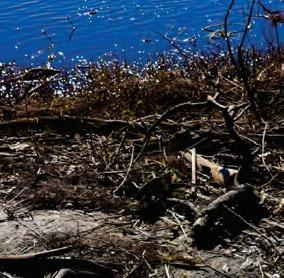








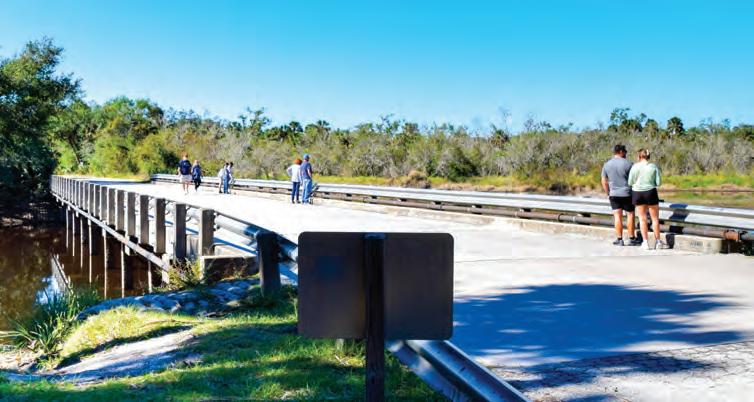
ABOVE: The bridge past the park visitor center provides a popular spot to view wildlife.
RIGHT: A spoonbill watches a fellow Myakka River dweller drift past.
BELOW: A hike to Deep Hole near Lower Myakka Lake allows adventurous hikers to seewhere alligators congregate.

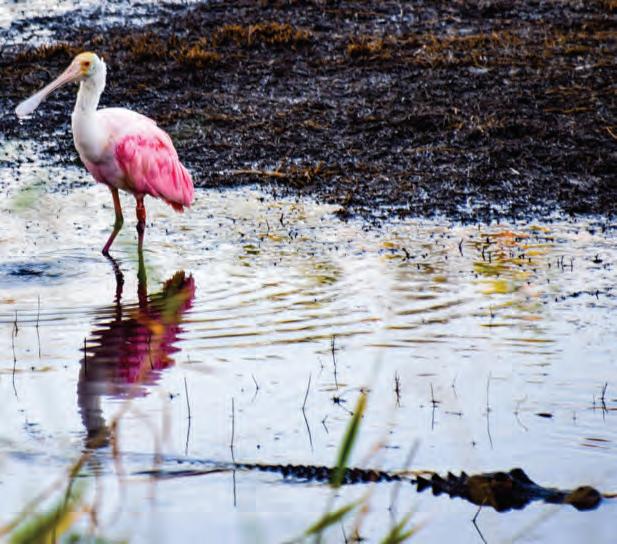
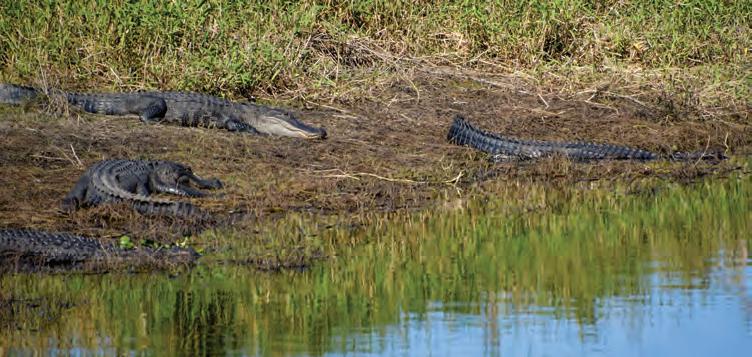
To secure one of the few daily passes to Deep Hole, visitors should arrive early at the park’s main entrance, which opens at 8 a.m. every day.
The Deep Hole trail begins about 1 mile west of the main park off State Road 72, and hikers will be provided with a gate code to access the area when they check in.
The trail is a shadeless 2.2-mile hike to Lower Myakka Lake that adjoins Deep Hole and is sandy in places, but flat, with dry prairie stretching endlessly on either side of the path. Sunscreen, hats and plenty of water are essential during summer months. Remember, it’s another 2.2 miles back.
Just before reaching the lake, a canopy of tall trees covered in Spanish moss offers the only shade toward the end of the path. The trees also serve as a favorite observation post for black vultures resting motionless like winged sentinels tracking human visitors passing through their domain. Deep Hole is a short walk to the left of the lake. Obviously, caution and common sense should be exercised when surrounded by potentially lethal animals, especially in such an isolated environment.
Deep water holes, often named for the striking color of their water, can be found across the United States. They may originate from underwater sinkholes, abandoned rock quarries or spring-fed submerged caves.
Blue Hole Spring in Fort White’s Ichetucknee Springs State Park is popular for its crystal-clear, alligatorfree waters and is a favorite site among snorkelers and cave divers.
In contrast, the Blue Hole on Big Pine Key in the Florida Keys is home to a range of wildlife, including snakes and alligators.
Some deep holes are more challenging, such as the Black Hole, also known as Naples Spring. A 200-foot-deep sinkhole about 30 miles off the coast of Naples, it’s recommended only for experienced divers.







32 ounces frozen, shredded hash browns, thawed
1/2 cup melted butter
101/2 ounces condensed cream of chicken soup

16 ounces sour cream
1/2 cup finely diced onion
2 cups shredded sharp cheddar cheese, divided ¼ teaspoon black pepper
Heat oven to 350 F. Grease a 9-by-13-inch casserole dish.


In a large bowl, combine hash browns, butter, soup, sour cream, onion, 1½ cups cheese and pepper. Spread the mixture into the prepared baking dish, and top with the reserved ½ cup of cheese. Bake for 45 to 55 minutes or until hot and bubbly.

Crustless Quiche Casserole
12 large eggs
1/3 cup milk
2 tablespoons sour cream
1/2 cup shredded
Swiss cheese
¼ teaspoon salt
Dash of pepper
Heat oven to 350 F.
2-3 green onions, thinly sliced
¼ cup bacon bits
Spinach and/or mushrooms, sauteed and lightly salted
Spray a 9-by-13-inch pan with cooking spray. Set aside. In a medium-size mixing bowl, add eggs, milk, sour cream, cheese, salt and pepper. Whisk together until mixed well. Add green onions, bacon and any sauteed veggies. Mix well.
Pour the mixture into the greased pan. Bake for 25 to 30 minutes or until the center springs back when touched.
1 pound bacon, cut into 1/2-inch strips
1 yellow onion, diced
1 red bell pepper, seeds removed, diced
3 cloves garlic, minced
12 large eggs
1 cup milk
3 cups fresh or frozen diced sweet potatoes
2 cups shredded cheddar cheese, divided
11/2 teaspoons salt
1/2 teaspoon black pepper
2 green onions, chopped
Heat oven to 350 F. Grease a 9-by-13-inch baking dish with nonstick cooking spray, and set aside.
In a large skillet, cook bacon over medium heat until it is crispy. Remove bacon, and place it on a paper towel-lined plate. Roughly chop the bacon. Set aside. Add the onion and red pepper to the skillet. Cook over medium heat until tender. Add the garlic, and cook for 2 minutes. Set aside.
In a large bowl, beat the eggs. Whisk in the milk. Stir in the cooked vegetables, potatoes and 1 cup of the shredded cheese. Set ¾ cup of bacon aside, and stir in the rest. Season with salt and pepper.
Pour the mixture into the prepared baking dish. Top with remaining cheese and green onions. Bake for 20 minutes. Evenly distribute the remaining bacon on the top of the casserole.
Bake for an additional 20 to 30 minutes or until the eggs are firm and the top is slightly golden brown. Let stand for 10 minutes. Cut into squares, and serve warm.
Note: This casserole can be prepared in advance. Pour the mixture in the pan, and refrigerate for up to 24 hours. Bake when ready to eat.
1 pound mild breakfast sausage
1 can crescent rolls
6 extra-large eggs, beaten
Heat oven to 350 F.
1 block cream cheese, cut into small cubes
2 cups shredded extra-sharp cheese
Spray a 9-by-13-inch baking dish with nonstick cooking spray. Brown sausage in skillet, draining excess grease. Spread crescent rolls in the bottom of the dish. Top with sausage. Pour eggs over sausage. Spread cream cheese cubes evenly, and top with shredded cheese. Bake for 30 minutes.
Note: You can prepare everything the night before. Cover the baking dish with plastic wrap, and refrigerate until ready to bake the next morning.
8 ounces cream cheese, softened
1 cup confectioners’ sugar
2 tablespoons milk
1 tablespoon vanilla extract, divided
2 cups blueberries, divided
2 loaves French bread, cubed
2 cups milk
8 large eggs
1 teaspoon ground cinnamon
1/2 teaspoon ground nutmeg
Mix cream cheese, confectioners’ sugar, milk and 1 teaspoon vanilla extract in a bowl until smooth and creamy. Fold in 1 cup blueberries.
Cover the bottom of a 10-by-14-inch baking dish with a layer of bread cubes. Spread cream cheese mixture over bread layer. Top with remaining bread cubes.
Whisk milk, eggs, 2 teaspoons vanilla extract, cinnamon and nutmeg in a large bowl. Pour over bread mixture. Sprinkle 1 cup blueberries over bread-egg mixture. Tightly cover dish with aluminum foil. Refrigerate 8 hours to overnight. Remove from refrigerator 30 to 60 minutes before baking.
Heat the oven to 375 F. Bake for 45 minutes. Remove foil, and continue baking until the center is set, about 30 minutes.





NIKON D810, 62mm lens ISO 250, f/6.3 at 1/400


By Dave LaBelle

When I fly into Portland, I try to get a seat on the right side—also known as the starboard side—of the airplane to see and photograph the Columbia River Valley, one of my favorite places on Earth.
The scenic airport approach along the Columbia is always different depending on the time of day, time of year and weather conditions. Ideally, I would choose to view the valley on a late afternoon in fall, maybe 30 minutes before sunset.
Whether you are a passenger in a car, riding on a train or flying in a plane, there are interesting pictures to be made, even through windows. I never pass through an airport or fly in a plane without a camera, because I never know what I might see.


However, there are a few things to consider when photographing through windows of moving vehicles.
• A fast shutter speed—1/500th or faster—is preferred when photographing a landscape from a moving vessel. Faster shutter speeds help reduce camera shake and freeze what you are taking pictures of outside. If you do not have control of shutter speeds, try increasing your ISO and the camera will compensate. Faster shutter speeds are particularly helpful if you press your lens against the glass to reduce flare or reflections.
• Focusing can be a problem. If you’re using autofocus, the

camera will often try to focus on the glass, especially if it is dirty or scratched, so it’s best to switch to manual focus, which allows you to focus beyond the window.
• Turn your flash off, especially in the evening. The flash does not help because it can only illuminate a few feet, not the hundreds of feet below to Earth. Instead, it will reflect off the glass and ruin the picture. Increase your ISO and the camera will adjust for the lower light outside.
Try photographing from a moving vehicle. Don’t wait to pull out your camera after you arrive at your destination. Experiment and see what interesting pictures you can make on the move.

Email your best image—just one—with caption information, including an explanation of how it affects you, to gph@pioneer.coop. We may share submissions on our website and social media channels.
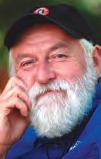

Photographer, author and lecturer Dave LaBelle has captured special moments for more than half a century, sharing photo tips and life perspectives with readers. For more of his writings, visit davidlabelle.com and his blog at bridgesandangels.wordpress.com.


D




iscover the enchanting allure of our Two Heart Necklace, where love’s symphony unfolds in timeless elegance. Inspired by that moment, when it all clicks and you realize you have found the one…. and where two become one, this exquisite piece captures the essence of two hearts entwined in a dance of destiny. Crafted with precision and passion and encased in 14k gold, it embodies the essence of your enduring love, echoing the sentiments of Shakespeare’s sonnets and the romances of Jane Austen. Our client’s favorite, it is now priced at its lowest ever even as gold reaches a record high, awarding it a stellar 4.9-star rating in reviews making it the Gift of the Year. Embrace the magic of shared dreams and whispered promises with the Two Heart Necklace, a treasure to cherish for generations to come. Let this necklace be your own love story, a testament to the beauty of companionship and the joy of finding
your perfect match. Embrace the romance and elegance of a bygone era with our Two Heart Necklace, a treasure to cherish for a lifetime.
Falling in love costs nothing but the value is priceless. Showing your love with this two hearts set costs next to nothing and the feeling you will get when wearing it or giving it to your love will certainly be priceless.
Two Hearts Collection
A. Bracelet (13 2/5 ctw) $299 $39* + S&P Save $260
B. Necklace (2 ⅛ ctw) $199 $39* + S&P Save $160

C. Earrings (4 ¼ ctw) $229 $39* + S&P Save $190 Necklace, Bracelet & Earrings
$727 $79* + S&P Save $648


Fall means it’s time to catch monster bull redfish
Stained coppery-gold, the water churned with activity, but this discoloration didn’t come from contamination.
Hundreds of copper-colored torpedoes darted through the writhing splotch stretching more than the length of a football field across the surface as it moved menacingly through the shallow bay. Ahead of the golden horde, terrified baitfish desperately tried to flee, vaulting from the water in a futile attempt to escape their spot-tailed marauders.
Motoring to where we could intercept the school, we rigged the largest mulletimitating topwater lures we could find. We tossed our temptations just in front of the bronze cauldron and twitched them. Almost instantly, both large plugs disappeared as if someone detonated underwater mines beneath them. Our reels screeched for relief as line sizzled from them.
Some people call these huge fish schools “red tides,” not to be confused with toxic algal blooms that can devastate marine life in an area. These red tides can annihilate marine life in a different way—by eating everything.
Nothing panics baitfish more than a mass of monster redfish heading their way.
Juvenile spot-tails spend their early years in estuaries and bays. When they reach sexual maturity, most head for deeper water, where they might live another 40 years. A female redfish reaches sexual maturity at about 3 to 9 pounds and males at about 2 to 6 pounds.
From late August through November, bull redfish come closer inshore to enter
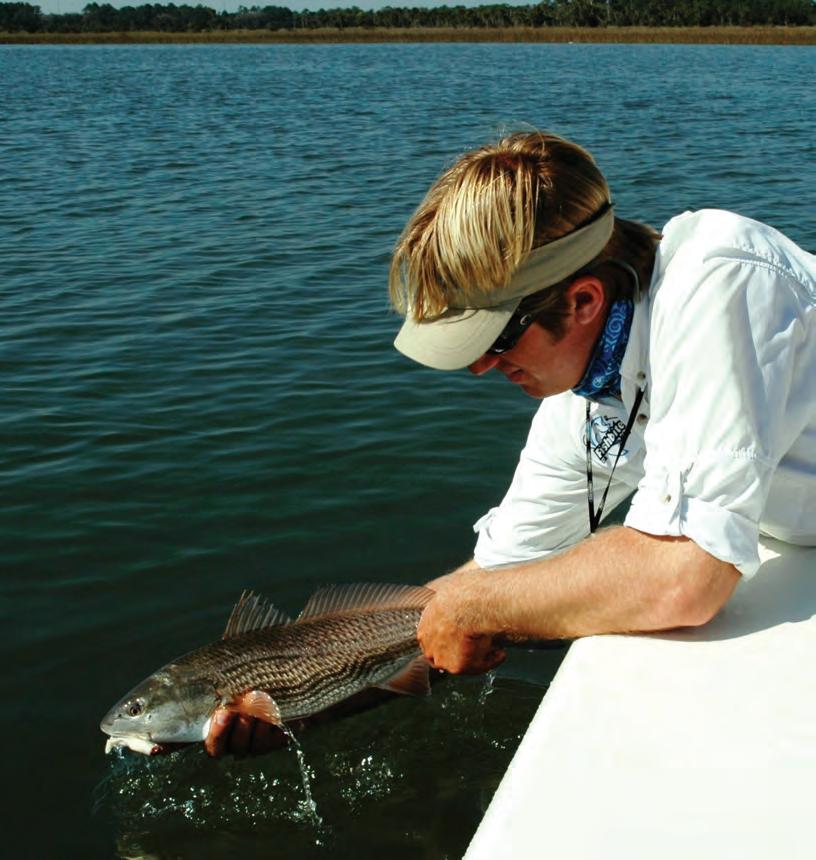
the bays and estuaries for spawning. The spawning peaks in October.
The term “bull” applies to size more than sex. Before spawning, bull redfish gorge themselves on anything they can swallow to keep up their energy levels. They voraciously move through bays and estuaries terrorizing shrimp, crabs and baitfish.
Spawning redfish don’t build nests like bass or bluegills. A member of the drum family, also called red drum, bulls gather in enormous spawning schools called drumming aggregates. Males call females to them with their drumming. Males might stay in the same general area for weeks, but females come and go as they become ready to spawn or finish.
Some schools might cover several acres, giving a coppery-red look to the water. When the bulls appear, these powerful fish can give anglers exciting action. After spotting the bulls, tie on the biggest lure with the strongest hooks.
For the most fun, throw big topwater
baits. Anglers can use various topwater temptations, and most catch redfish. Many saltwater anglers prefer walk-the-dog baits that move with a scintillating side-to-side motion across the surface, simulating a struggling crippled baitfish.
When bulls get in a feeding frenzy, lure placement matters more than lure type or color. Toss the enticement just in front of the school. Pop or twitch it, and hold on. When a big redfish smashes a topwater bait, it mimics someone throwing dynamite into the water with a tackle-testing fight to follow.
In early fall, watch for churning waters. In the right spot, anglers can find incredibly intense action, and that’s no bull. Correction, that might mean many bulls.

John N. Felsher is a freelance writer, broadcaster, photographer and editor. He’s written more than 3,500 articles on a wide variety of outdoor topics. Contact him at j.felsher@hotmail.com or through Facebook.

“I never expected it to be so beautiful that it takes your breath away.”
— Kaya C., on Stauer Opals
In a quaint village, nestled between rolling hills, lived a young woman with a deep appreciation for gemstones. Her grandmother gifted her a delicate cross pendant adorned with opals. The opals shimmered with a mesmerizing play of colors, reflecting hues of blues, greens, and fiery oranges. Her grandmother shared the legend of the opals, believed to bring hope, purity, and luck to those who wore them.
Using this story as inspiration, Stauer brings you the Opal Spirit Cross Pendant. With over 2 total carats of Kyocera lab-created opals set in .925 sterling silver encased in yellow gold, this pendant is a radiant celebration of beauty and craftsmanship. Each opal captivates with a kaleidoscopic dance of fiery oranges blending into oceanic blues, streaked with flashes of vibrant green that seem to come alive with every movement. The shimmering opals are skillfully arranged to create an enchanting, otherworldly glow, embodying the spirit of hope and harmony.
This breathtaking combination of color and craftsmanship is available as a limited availability of only
930 pieces, making it a rare and treasured addition to your jewelry collection. Plus, when you order today, you’ll receive the gold-finished sterling silver chain—a $69 value—absolutely free!
miss your chance to own this exclusive tribute to timeless elegance and meaningful symbolism.
Necklace Specifications:

All ages can find something new and exciting around every corner of the state. Filled with rich history, abundant natural beauty and diverse events all year, Florida has something fun for everyone.
Oct. 3
Taylor Swift Listening Party
We’re rolling out the red carpet for “The Life of a Showgirl.” Lounge from 7-8 p.m. at Coastal Cat Cafe with our fabulous feline stars while experiencing Taylor’s latest album in full surround sound. Channel your inner showgirl with the sparkle of sisterhood, sequins and Swift. Admission is $28 and includes unlimited cuddles with adoptable feline residents, a hot beverage and a DIY friendship bracelet. Tickets are limited, so register early. coastalcatpcola.com/event-details/taylor-swift-listening-party-2; 850-359-1133
Oct. 3-5
Panama City Beach Oktoberfest
This festival is one of Florida’s most authentic Oktoberfest celebrations, bringing Bavarian tradition to the Gulf Coast for a weekend of fun for all ages. This year’s festival features performances by The Bräts, The Czechers, and the Will Thompson Band, filling the air with German tunes and lively polkas. In true Oktoberfest fashion, the festival offers stein-hoisting competitions, tug-of-war battles, and best-dressed contests for those ready to show off their dirndl or lederhosen. Children can enjoy bounce houses and other activities while vendors serve German-inspired food and unique goods. Held at the spacious Aaron Bessant Park grounds, PCB Oktoberfest delivers the sights, sounds and flavors of Bavaria—just steps from the beach. pcboktoberfest.com

Oct. 4
Barktoberfest
Get ready to unleash the fun at Pawsitive Effects’ annual Barktoberfest from 10 a.m. to 3 p.m. at Stuart Park. This tail-wagging, fur-filled fiesta is free to the public and features dogs and cats of all shapes and sizes looking for their forever homes. Bring the whole family—pets, too. There are activities galore, including pet photo ops, pet costume contests, vendors with unique goodies for you and your furry pals, mouthwatering food and groovy tunes to get your tail wagging. If you bring a donation of U.S.-made dog or cat food, you can snag a ticket for a chance to win a prize. Donations go to nonprofit rescues in Highlands and Hardee counties. Your four-legged friends are welcome as long as they are socialized and leashed. Retractable leashes are prohibited at this event. Be prepared to pick up after your dog. pawsitiveeffects.org; 863-441-0351
Oct. 4
Camp Wingmann’s Fall Family Festival
Join the camp from 11 a.m. to 3 p.m. for its fourth annual event filled with activities for the whole family. Enjoy a day of fun in the beautiful outdoors with a fall market, rock climbing, kayaking, archery, petting zoo, pony rides, bounce houses, food trucks and more. Don’t miss out on this opportunity to create unforgettable memories with your loved ones.
863-453-4800


Oct. 17-19
Ladies, Let’s Go Fishing
Learn from the pros and participate in a networking reception and classes while receiving hands-on skill practice. Gifts are included when you register online. Registration starts at $125, with a discount for women with teens. No equipment or experience is required. Optional offshore or inshore fishing charters are on Friday and Sunday out of Islamorada, with prizes awarded for the Fishing Fever tournament. Ladies can also fish on their own boats. Reservations made far in advance are recommended.
ladiesletsgofishing.com; 954-475-9068






Oct. 10-11
Festa Italiana
The Sons & Daughters of Italy in America Buona Fortuna Lodge presents the 15th annual Festa Italiana, a celebration of Italian heritage, cuisine and culture. This year’s Festa Italiana promises an unforgettable experience from 11 a.m. to 6 p.m. that includes culinary delights, art and culinary demonstrations, family-friendly activities and a silent auction. buonafortunalodge.org/festa-italiana; 504-235-8228
Oct. 16-26
Interstate Fair
This annual fair includes more than 60 rides, top-name entertainers, engaging and educational exhibits, and food vendors. There is always something new to see and do at the fair. The fair includes facilities for the agricultural, educational, scientific, livestock, cultural, commercial and industrial resources of surrounding counties and states. The Interstate Fair is a star-spangled parade of exhibits that attracts participants from all over the country.
pensacolafair.com; 850-944-4500
Oct. 18
Native Plant Giveaway and Open House
Celebrate National Wildlife Refuge Week by visiting Florida Keys Wildlife Society’s native plant giveaway and open house from 10 a.m. to noon in the parking lot of Florida Keys National Wildlife Refuge Nature Center. Get a free plant, learn about native plants, talk with Master Gardeners, and visit the nature center and store. Complimentary food and refreshments are sponsored by First Horizon Bank.
floridakeyswildlifesociety.org; 305-872-0774
Oct. 25
Halloween Market
Get a double dose of spooky Halloween fun from 9 a.m. to 2 p.m. at Palafox Market Halloween Market. Trick-or-treat with more than 200 vendors spread across two historic downtown Pensacola parks: MLK Jr. Plaza and Plaza Ferdinand. A free Haunted Trolley boards courageous riders from 10:30 a.m. to 2:30 p.m. The first 50 children who ride get a special treat. Keep an eye out for Winterfest’s Pumpkin Man as he walks through the parks handing out candy. downtownpensacola.com/palafox/palafox-market; 850-434-5371



Oct. 11-12
Munson Heritage Festival
The Munson Heritage Festival showcases the unique past and culture of Northwest Florida—particularly northern Santa Rosa and Okaloosa counties. The event is from 9 a.m. to 4 p.m. and offers arts and crafts vendors, an art show, a car show, food vendors, live entertainment and children’s activities at Krul Recreation Area in Northwest Florida. munsonheritage.com; 850-889-3144

Want to share a family-friendly event with the readers of Florida Currents? Head online and enter the details at tinyurl.com/FloridaCurrents or use the QR code for easy access. Make sure to submit the item at least 60 days before the event (due to press deadline). If you own rights to a print-quality photo promoting your event, include it with photo credit information.



ADOBE STOCK IMAGE
BY SUNSHOWER SHOTS

Fall has officially arrived. Temperatures are dropping, the holidays are just around the corner, and the notorious golden rain trees have finally set fruit. Oh, you know the ones. Adorned with sprawling limbs covered in peach-colored, delicate paper lanterns, the trees are botanical spectacles that capture everyone’s attention.
While these show-stopping trees are admired by many, it’s impossible to overlook their highly invasive characteristics. In fact, the golden rain tree, or koelreuteria elegans, is listed by the Florida Exotic Pest Plant Council as a Category II invasive plant.
Native to northern China and Korea, the golden rain tree was introduced to Florida in the mid-1900s as a fast-growing ornamental for developed landscapes. Fastgrowing is perhaps an understatement, as this species can quickly reach heights of 25 to 50 feet with a 35- to 50-foot canopy spread.
While the swift development of these
plants might initially appear beneficial for household gardeners, the resulting weaker wood over time can pose challenges, especially in times of strong winds.
The peach-colored paper lanterns are the fruit of the golden rain tree. Each fruit is comprised of a three-valved capsule containing seeds that can germinate in just a few days. This high germination rate, coupled with an abundance of seeds, means these trees can spread to unintended areas, potentially disrupting native plant communities along the way.
The seeds of the golden rain tree are exceptionally attractive to the jadera— the soap berry bug, jadera haemtoloma. Although these bugs are harmless to humans, they gather in the thousands to

feed upon seeds on the ground, producing a red stain when squashed.
These species have experienced a surge in abundance or occurrence, but there is no direct evidence yet of them significantly altering Florida’s plant communities, according to the Florida Exotic Pest Plant Council. Nevertheless, if they exhibit additional detrimental effects, they could be reclassified as Category I invasive.
Given these invasive tendencies, consider landscaping with numerous alternative tree options that offer visual appeal and ecological compatibility.
For more information on Florida-friendly or native tree alternatives for your landscape, visit these sites: fnps.org/plants, ffl.ifas.edu/ apps/plants and fann.org/plants.
Heather Kalaman serves as the Florida-friendly landscaping horticulture agent for UF/IFAS Extension Orange County. She is a graduate of the UF Doctor of Plant Medicine Program and has a master’s degree in environmental horticulture, where her research focused on pollinator-plant interactions. Her passions and programming focus on sustainable landscaping practices.
Did you know October is National Co-op Month? Read the following facts to learn how co-ops are unique, then find and circle the bolded words in the puzzle.
• Co-ops and their members work together toward a common goal.
• Co-ops are local organizations, so they understand the communities they serve.
• All co-ops operate according to the same set of Seven Cooperative Principles.
• Concern for Community is the seventh cooperative principle.
• Co-ops don’t serve customers; instead, they serve members.
• Co-ops are led by the local members they serve.

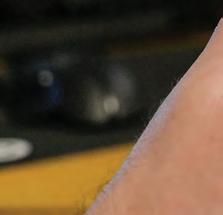

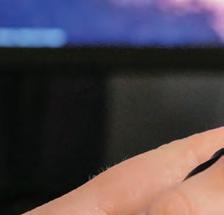






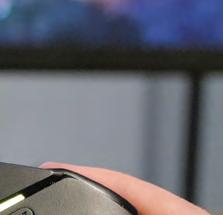


Powering off between gaming sessions can save energy.

By Miranda Boutelle



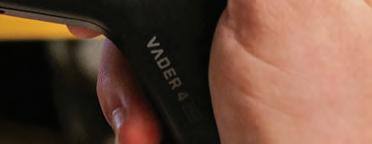







prolong the life of your pool’s filtering system.
Out of sight, out of mind. It’s easy to overlook the hidden energy users in our homes. Yet, every plugged-in device and ready-to-use appliance can lead to higher electric bills.
Let’s see if we can find some hidden energy savings for you.
Your water heater could be using more energy than necessary. Storage water heaters heat water to a preset temperature. When hot water is used, cold water replenishes the tank, lowering the overall temperature. The water must then be reheated to that preset level. If the water heater is set higher than needed, it wastes energy.
Most water heaters are set to 140 degrees at the factory. The U.S. Department of Energy recommends setting the temperature to 120 degrees to save energy and reduce the risk of scalding. Do not set it lower than 120 degrees to prevent bacteria development in the tank.
Exterior security lights, porch lights and barn lights can use more energy than needed. Supposing they are on every night, that adds up to 4,380 hours—half the hours in a year. If those lights use outdated, inefficient technology, they waste energy. With that many hours, even a slight increase in efficiency can yield big energy savings.
Switch to energy-efficient LED bulbs. If lights need to stay on, consider upgrading to motion sensor lights so you aren’t drawing energy all night.
Pools and hot tubs can also be big energy users. Since you don’t see the pumps or heaters by design, it’s difficult to know when they are operating and consuming energy. Pumps filter water to keep it clean and safe for swimming. Energy Star-certified pumps run at lower speeds and can be programmed to match your pool’s filtering needs, according to the U.S. Environmental Protection Agency. They can pay for themselves in two years, are quieter and can
Set your hot tub to a lower temperature when it’s not in use to reduce energy consumption. If your electric utility has time-of-use rates, consider scheduling accordingly.
Plug load is anything in your home that is plugged into an outlet. As we use more appliances and technology in our homes, plug load energy use increases. Check outlets around your home. Unplug any items you aren’t using.
For computer stations and entertainment centers, consider using smart power strips. These devices sense when energy is being used and turn peripheral devices on or off as needed.
Gaming consoles are another hidden energy user. Gamers often put them in rest mode when not in use. This allows them to complete updates and reduces startup time for the next session. It also means they are still consuming energy even when not actively used. Powering off between gaming sessions can save energy. Ask the gamers in your life to power off. It may require a bit more time for updates, but every kilowatt-hour counts when it comes to saving energy.
It’s easy to make a habit of powering down and unplugging once you identify everything drawing power in your home. For upgrades, reach out to your electric utility about available rebates to help cover costs.

Miranda Boutelle has more than 20 years of experience helping people save energy. She has worked on energyefficiency projects from the Midwest to the West Coast. Today, Miranda is chief operating officer at Efficiency Services Group in Oregon, a cooperatively owned energyefficiency company.
Required by 39 USC 3685 Filed with the USPS on 9-11-25
FLORIDA CURRENTS, (ISSN 23276304, USPS 8300), is published monthly at 5625 NE Elam Young Parkway, Suite 100, Hillsboro, OR 97124.
Twelve issues are published annually with a subscription price of $8.27 paid by utility members in their electric bills.
The name and complete mailing address of the publisher is: Pioneer Utility Resources Inc., 5625 NE Elam Young Parkway, Suite 100, Hillsboro, OR 97124.
The name and complete mailing address of the editor is Chasity Anderson, 5625 NE Elam Young Parkway, Suite 100, Hillsboro, OR 97124.
The owner is Pioneer Utility Resources Inc. (PUR). There are no known bondholders or other security holders. PUR is a nonprofit organization mailing under DMM Section 423.12. Its purpose, function and nonprofit status for federal income tax purposes has not changed in the preceding 12 months.
b.
c.
through 15d(4))
f. Total Distribution (Sum of 15c and 15e)
g. Copies Not Distributed
h. Total (Sum of 15f and 15g)
i. Percent Paid (15c divided by 15f
I certify the statements made by me are correct and complete. Chasity Anderson, Editoral Director





























































Protecting yourself online doesn’t have to be complicated or expensive. A few simple habits can dramatically reduce your risk of falling victim to cybercrime. While you can never be “hackproof,” you can become resilient in the online world.
At the heart of online safety there are four essential behaviors the National Cybersecurity Alliance calls the Core 4. These steps will help shield your personal information, protect your online accounts and keep your devices secure.
1. Use resilient passwords
Your passwords are the first line of defense between a criminal and your sensitive information. Here’s how to have amazing passwords:
• Every password must be long, unique and complex. Every password should be at least 16 characters long, which significantly overwhelms password-cracking programs. Use a random mix of letters, numbers and symbols.
• Don’t reuse passwords. Every account needs a unique password. Unfortunately, making small changes, like adding numbers or switching out an “S” with a “$,” doesn’t count as a unique password.



• Use a password manager to store and generate strong passwords. If you’re wondering how to manage so many unique, long passwords, there are many free, secure options. Password managers are the safest way to store your passwords. If you prefer to keep a password notebook, take great care of it.
2. Enable multifactor authentication
Multifactor authentication—sometimes called 2FA—adds an extra security layer by requiring something more than just your password to log in. Think of it as using two locks on your digital door instead of only one. This could be:
• A one-time code sent to your phone or other devices.
• A biometric scan like a fingerprint scan or Face ID.
• A physical security key.
Enable MFA on your accounts—especially email, banking and

social media. It’s a simple way to supercharge the security on your accounts. Also, never share MFA codes with anyone—this includes not sharing them over the phone, through texts or via email. Only scammers will ask for MFA codes.
3. Keep software updated
Software updates don’t just bring new features. They often fix security flaws that criminals exploit. It usually takes a few minutes, but updates are worth it. Here are some tips:
• Turn on automatic updates when possible for your devices and apps. You can usually find these options in your settings.
• Install updates promptly for your operating systems, browsers, antivirus tools and apps.
• Don’t click “Remind Me Later”—the security is worth it.
• Remember your phones, smartwatches and tablets are computers, so keep these devices updated as well.
4. Look out for phishing and scams

Phishing remains the most common online threat. Criminals send fake emails, texts or social media messages to trick you into revealing sensitive information or clicking malicious links. These messages aim to get you to click before you think by playing with your emotions. Scammers will even call you.
Here’s how to look out for phishing and scams:
• Be highly skeptical of unexpected messages, especially those urging immediate action or asking for personal details.
• Phishing emails can light up positive emotions (“You’ve won our sweepstakes!”) or negative ones (“You’ve been hacked!”).
• Don’t click suspicious links or download unexpected attachments.
• Report phishing attempts to your email provider, social media platform or IT department.
• If you’re unsure if a message is legit, ask a friend, co-worker or family member. A second set of eyes can be invaluable in spotting scams.



From the setting of the sun to the creatures that make their homes in your backyard, Florida is filled with beautiful moments. The scenes you capture have a chance to brighten someone’s day.
From time to time, we share some readers’ photos in this space. If we use your photo here, we will send you your choice of a $25 gift card to REI or Amazon.
To submit your photo, email a JPEG file to photos@floridacurrents.com. Include “Before You Go” in the subject line. Please share a bit about what inspired you to make your photo.




Our home elevators can t just about anywhere in your home
THE MODERN SOLUTION
A Stiltz Homelift is a safe, attractive, & affordable alternative to stairlifts. It requires no special machine room, and no supporting walls.
ECONOMICAL & FLEXIBLE
A Stiltz Homelift can t just about anywhere in your house. It has a compact footprint, similar in size to a small armchair. A Stiltz Homelift plugs into a standard home electrical outlet, using less power than a coffee maker.
YOUR FOREVER HOME
Avoid the expense and distress of relocating, or the disruption of adapting

Did you know?
your home for downstairs living. A Stiltz Homelift helps you live safely and independently in the home you love.
IT’S NEVER TOO SOON
Some Stiltz customers need a Homelift immediately. But others want to “future-proof” their homes for when the stairs become a challenge.
HOMELIFT SPECIALISTS
Stiltz is a world leading Homelift manufacturer, so you’ll be in good hands. Your elevator will be installed and maintained by Stiltz trained professionals who truly care about your freedom.
AARP survey data shows that 77% of adults 50 and older want to remain in their homes for the long term. At Stiltz, we’re here to help you stay in your home you love. It’s easy.
“I can’t imagine what we’d do without it. I wish we had installed our Stiltz Homelift several years ago!”
– Mr. James, Roanoke, VA
Why choose Stiltz?
• Affordable
• Small Footprint
• Full Safety Features
• Clean, Quiet Operation
• Low Power Consumption
• Freestanding Design
• Wheelchair Accessible
• Carry Laundry or Pets
• Fast Installation
• Full Warranty





This year, Florida Keys Electric Cooperative’s Cover Photo Contest set a new record for participation, with members submitting more than 150 entries. Once again, our talented members carried on the tradition of showcasing the Keys’ one-of-a-kind beauty through their lenses and sharing their creativity with the entire community.
We extend our heartfelt thanks to everyone who contributed their time, talent, and eye for beauty to make this year’s contest our most memorable yet.
Congratulations to member Loretta Alkalay, winner of this year’s cover photo contest! This issue’s cover showcases her stunning sunrise shot of swaying palms at Sombrero Beach in Marathon.
Second place was awarded to Kris and Naja Murphy for their captivating underwater photo at Molasses Reef. Sue Marchetti earned third place with an image taken from a paddleboarder’s perspective.
To be considered, photos had to be taken by an FKEC member within our service territory (from the County line
to the Seven Mile Bridge), and each member could only submit up to five photos.
The contest was judged by the Florida Currents publishing team— not by an FKEC employee or associate— to avoid any bias. The top three winners each received bill credits. If you missed the contest this year, don’t worry. We look forward to offering it again in 2026, so keep your cameras handy. n





















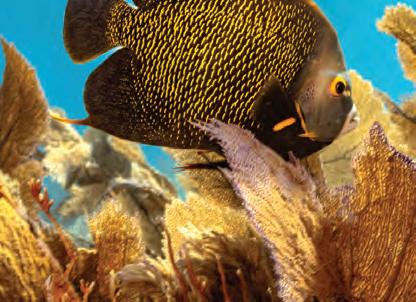















Here is a sneak peek at the second and third place photo contest winners that will be featured on upcoming covers of the